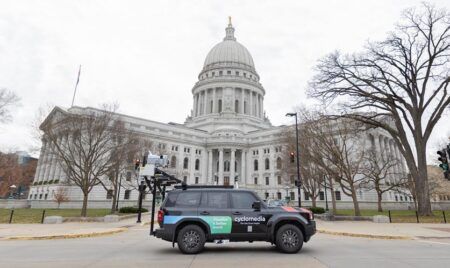According to a report released by the TRIP national transportation research group, the USA’s rural transportation system is in urgent need of repairs and modernization to stimulate economic growth in communities across the country.
Sponsored by companies and organizations involved the USA’s transportation industry, TRIP’s new report, Rural Connections: Challenges and Opportunities in America’s Heartland, assesses the conditions and safety of the country’s rural roads and bridges, and concludes that improvements are necessary to resolve rural roadway deficiencies, high fatality rates, a lack of connectivity to other communities or major highways, and an inability to accommodate higher traffic volumes.
TRIP studies found 15% of US rural roads are in poor condition, 21% in mediocre condition, 16% are rated as being in fair condition, and the remaining 48% are in good condition. The report also showed that 10% of rural bridges are considered structurally deficient, having significant deterioration to major bridge components. Additionally, traffic crashes and fatalities on rural non-Interstate roads are reported to be disproportionately high two-and-a-half times higher than on other roadways.
“The safety and quality of life in America’s small communities and rural areas, and the health of the nation’s economy ride on our rural transportation system,” noted TRIP’s executive director, Will Wilkins. “Fixing the federal Highway Trust Fund with a long-term, sustainable source of revenue that supports the transportation investment needed, will be crucial to the modernization of our rural transportation system.”
The American Traffic Safety Services Association (ATSSA) concurs with this view, and feels the implementation of rural transportation improvements would be more attainable if Congress would provide a long-term, sustainable funding solution.
The ATSSA’s VP of government relations, Nate Smith, commented, “Ensuring the long-term solvency of the Highway Trust Fund gives states the necessary investments to aggressively tackle and reduce the number of road users killed on rural and urban roadways. A commitment to roadway safety must include fully funding transportation projects and making the Highway Trust Fund solvent. Without solving this funding challenge, we are fighting to reduce fatalities toward zero with one arm tied behind our back.”
The ATSSA’s communications director, James Baron, added, “Rural roads account for only about 25% of vehicle miles traveled, but 50% of roadway fatalities. Many of these roads have no markings to guide motorists. Installing brighter signs and markings, rumble strips, guardrails, and high friction surfacing treatments on sharp curves, will help save lives on these roadways.”




